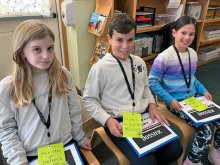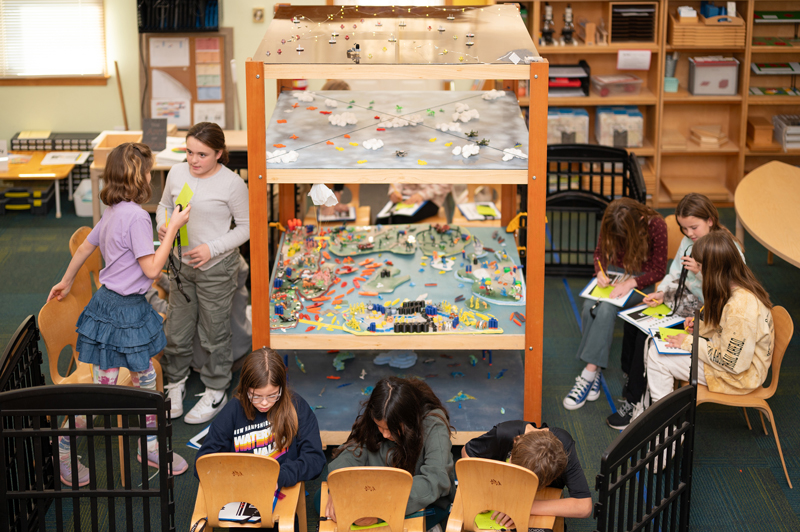Inly Students On the Path to World Peace

With a commitment to respect, dignity and equitable treatment, Inly thoughtfully integrates peace and social justice education into its PreK–8 curriculum and daily teachings.
Students build empathy and relationship skills through cultural lessons, with the creation of classroom commitments, at Montessori “peace tables,” and in Upper Elementary’s World Peace Games, taking place this Fall.
Learning to Resolve Conflicts at the Peace Table
In Montessori classrooms, children learn how to resolve conflicts in a formal way at the “peace table.” In a quiet corner of the room they learn how to acknowledge their feelings and express themselves while passing a “peace object,” such as a rock or a flower, back and forth as they speak. Only one child (the one holding the peace object) may speak at a time. By listening to each other’s point of view, they learn to acknowledge the other person’s feelings and reach a peaceful resolution, often with the gentle guidance of their teacher.
“Learning to become peaceful classroom citizens is the first step toward becoming peaceful global citizens,” says Dee Slavin, Director of Lower School.
The Peace Table is used in Children’s House through Upper Elementary classrooms. Whether a formal table or a makeshift lesson, it teaches children to identify and express their feelings, show empathy toward others and solve their own conflicts.

Solving Real-World Problems in the World Peace Game
Upper Elementary students put all that they’ve learned about conflict resolution into practice in the World Peace Game, a hands-on political simulation created by visionary educator John Hunter. Played on a giant “board” that spans multiple plexiglass layers representing land, underwater, air, and space, this immersive experience empowers young minds to explore global dynamics, cultivate critical thinking, and advocate for peace.
Grade 4–6 students collaborate, strategize, problem-solve, and think critically in a fictitious world on the brink of collapse, laden with political, economic, and environmental challenges. Roles like Prime Minister, Secretary of State, and Minister of Finance deepen the experience, while global entities such as the United Nations, World Bank, weather events and arms dealers add layers of complexity. The presence of an unknown saboteur injects an element of uncertainty, intensifying the diplomatic and economic challenges.

The general objectives presented to students include establishing peace for their nation and all nations, increasing prosperity, and solving major economic, social, and military problems. How students achieve these goals is entirely up to them, fostering creativity, collaboration, and strategic thinking.
“Students take the game and their roles very seriously,” says teacher Amanda Hollenback. “They work together to make meaning out of chaos and learn that there are competing priorities in the real world. Students discover that compromise and communication are key in solving problems.”
The World Peace Game at Inly has the potential to inspire a new generation of leaders who will approach global challenges with empathy, creativity, and a commitment to building a more harmonious world.
Learn more by watching John Hunter’s TED Talk: Teaching with the World Peace Game
May there be peace before you,
May there be peace behind you,
May there be peace above you,
And all around you.
From our hearts, to our lips, to everyone.




















